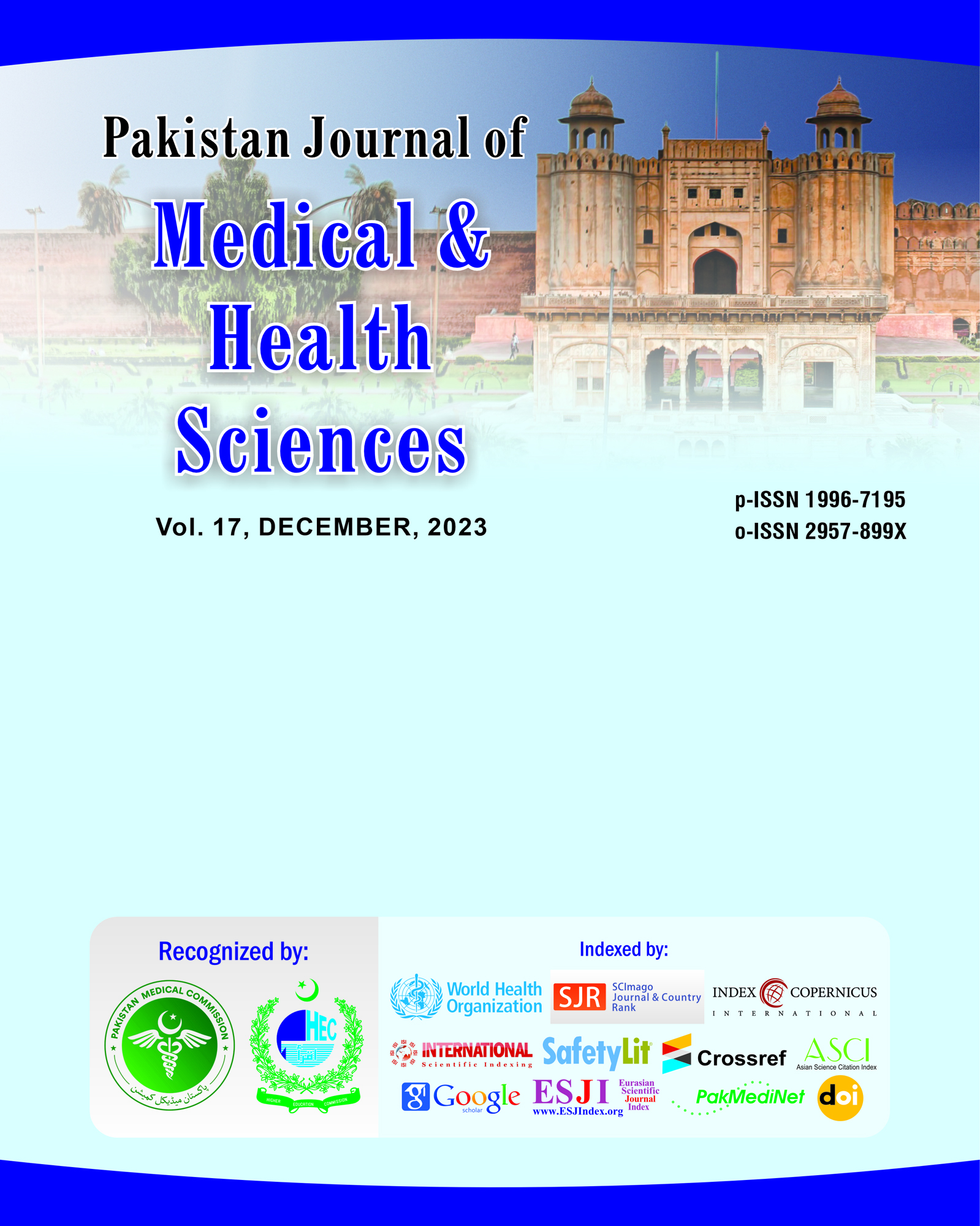Comparative Evaluation of T-Plate Fixation with and without Distal End Screws in Volar Barton’s Fractures
DOI:
https://doi.org/10.53350/pjmhs020231712264Abstract
Background: Volar Barton’s fractures are unstable intra-articular distal radius fractures, commonly treated by volar T-plate fixation. However, controversy exists regarding the routine use of distal end screws due to potential complications.
Objective: This study aimed to compare clinical and radiological outcomes of volar Barton’s fractures treated with volar T-plate fixation using distal end screws versus without distal end screws.
Methods: This prospective comparative clinical study was conducted at Shifa International Hospital, Islamabad and Ittefaq Hospital Lahore, Pakistan, from January 2023 to August 2023. Fifty patients were enrolled and equally randomized into two groups (Group A: fixation with distal end screws; Group B: fixation without distal screws). Outcomes assessed included radiological parameters (volar tilt, radial height, inclination, articular congruity), functional recovery (Mayo Wrist Score, grip strength, wrist motion), and postoperative complications, with follow-up at 6 months.
Results: Anatomical restoration was significantly superior in Group A, with better volar tilt (10.6 ± 2.1° vs. 8.4 ± 2.7°, p = 0.01) and radial height (11.9 ± 1.1 mm vs. 10.6 ± 1.5 mm, p = 0.02). Functionally, Group A showed significantly higher Mayo Wrist Scores (87.2 ± 6.4 vs. 81.8 ± 7.1, p = 0.03), better grip strength (90.1 ± 6.7% vs. 83.4 ± 7.9%, p = 0.02), and greater wrist flexion and extension arcs (p < 0.05). Transient flexor-tendon irritation occurred more in Group A (16%), but significant mechanical complications such as malunion and reduction loss were higher in Group B (20%). No severe complications occurred in either group.
Conclusion: Using distal end screws with volar T-plate fixation significantly improves anatomical alignment and functional outcomes in volar Barton’s fractures, with minimal, manageable soft-tissue irritation. Therefore, the routine use of distal screws is recommended for optimal outcomes.
Keywords: Volar Barton’s fracture, distal radius fracture, T-plate fixation, distal end screws, functional outcomes, anatomical alignment.
Downloads
How to Cite
Issue
Section
License
Copyright (c) 2023 Muhammad Faheem Kausar, Tauseef Raza, Hasnain Ali, Muhammad Moueen, Ahmed Ali Khan, Hafiz Muhammad Abid Hasan

This work is licensed under a Creative Commons Attribution 4.0 International License.


